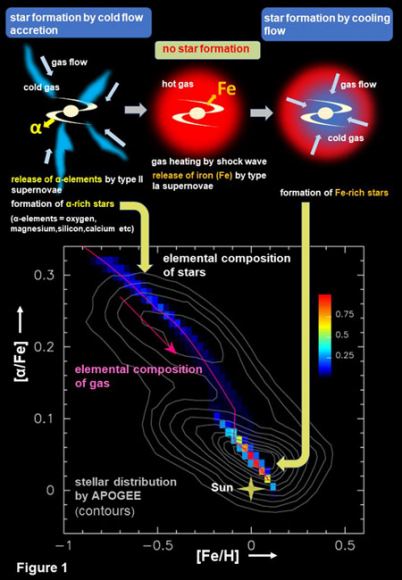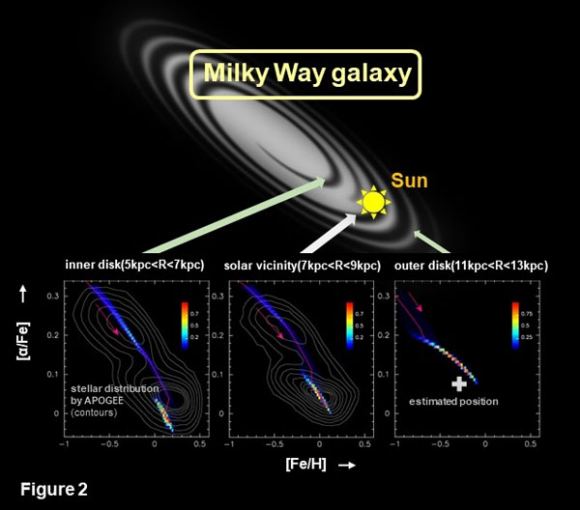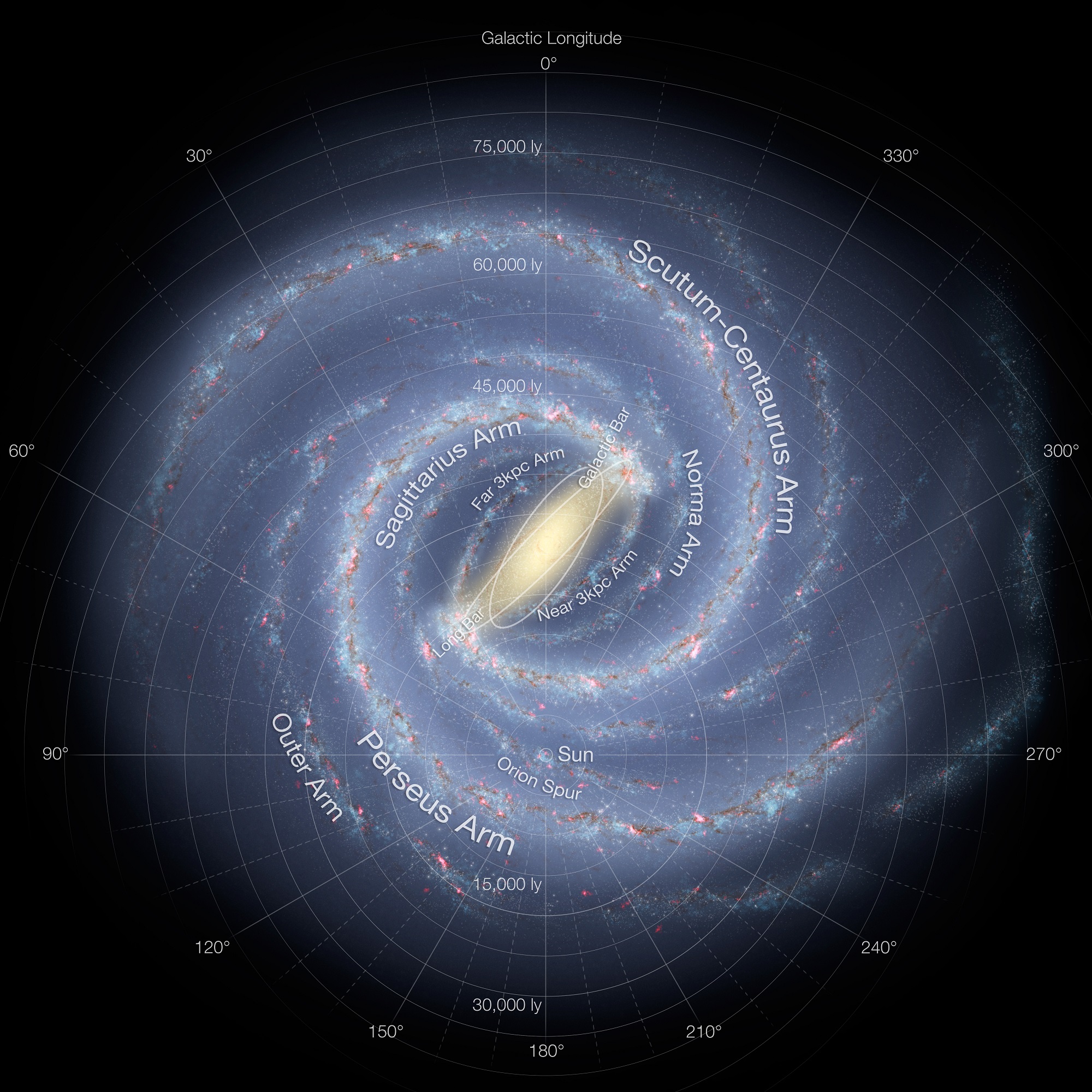Since the birth of modern astronomy, scientists have sought to determine the full extent of the Milky Way galaxy and learn more about its structure, formation and evolution. According to current theories, it is widely believed that the Milky Way formed shortly after the Big Bang (roughly 13.51 billion years ago). This was the result of the first stars and star clusters coming together, as well as the accretion of gas directly from the Galactic halo.
Since then, multiple galaxies are thought to have merged with the Milky Way, which triggered the formation of new stars. But according to a new study by a team of Japanese researchers, our galaxy has had a more turbulent history than previously thought. According to their findings, the Milky Way experienced a dormant era between two periods of star formation that lasted for billions of years, effectively dying before coming back to life again.
Their study, titled “The formation of solar-neighbourhood stars in two generations separated by 5 billion years“, recently appeared in the scientific journal Nature. The study was conducted by Masafumi Noguchi, an astronomer from the Astronomical Institute at Tohoku University, Japan. Using a new idea known as “cold flow accretion”, Noguchi calculated the evolution of the Milky Way over a 10 billion year period.

This idea of cold gas accretion was first proposed by Avishai Dekel – the Andre Aisenstadt Chair of Theoretical Physics at The Hebrew University in Jerusalem – and his colleagues to explain how galaxies accrete gas from surrounding space during their formation. The concept of two-stage formation has also been suggested in the past by Yuval Birnboim – a senior lecturer at The Hebrew University – and colleagues to account for the formation of more massive galaxies in our Universe.
However, after constructing a model of the Milky Way using composition data of its stars, Noguchi concluded that our own galaxy also experienced two stages of star formation. According to his study, the history of the Milky Way can be discerned by looking at the elemental compositions of its stars, which are the result of the composition of the gas from which they are formed.
When looking at the stars in the Solar neighborhood, many astronomical surveys have noted that there are two groups that have different chemical compositions. One is rich in elements like oxygen, magnesium and silicon (alpha-elements) while the the other is rich in iron. The reason for this dichotomy has been a long-standing mystery, but Noguchi’s model provides a possible answer.
According to this model, the Milky Way began when cold gas streams accreted into the galaxy and led to the formation of the first generation of stars. This gas contained alpha-elements as a result of short-lived type II supernovae – where a star undergoes core collapse at the end of its life cycle and then explodes – releasing these elements into the intergalactic medium. This led to the first generation of stars being rich in alpha-elements.

Then, about 7 billion years ago, shock waves appeared that heated the gas to high temperatures. This caused the cold gas to stop flowing into our galaxy, causing star formation to cease. A two-billion year period of dormancy continued in our galaxy. During this time, long-lived type Ia supernovae – which occur in binary systems where a white dwarf gradually siphons material from its companion – injected iron into the intergalactic gas and changed its elemental composition.
Over time, the intergalactic gas began to cool by emitting radiation and started flowing back into the galaxy 5 billion years ago. This led to a second generation of star formation, which included our Sun, that were rich in iron. Although the two-stage formation has suggested for much more massive galaxies in the past, Noguchi has been able to confirm that the same picture applies to our own Milky Way.
What’s more, other studies have indicated that the same may be the case for the Milky Way’s closest neighbor, the Andromeda Galaxy. In short, Noguchi’s model predicts that massive spiral galaxies experience a gap in star formation, whereas smaller galaxies make stars continuously.
In the future, observations by existing and next-generation telescopes are likely to provide additional evidence of this phenomena and tell us a great deal more about galaxy formation. From this, astronomers will also be able to construct increasingly accurate models of how our Universe evolved over time.
Further Reading: Tohoku University, Nature

